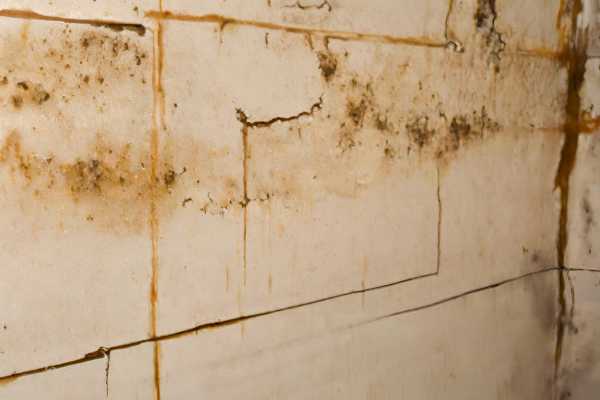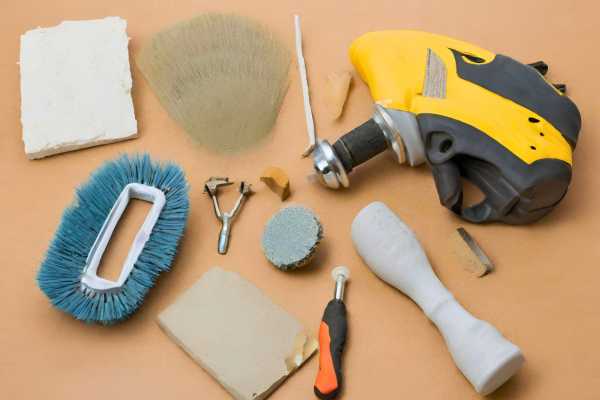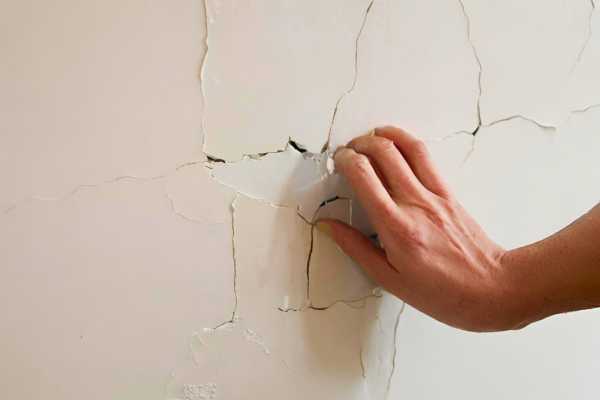Crumbling concrete walls can be A cause for concern And may indicate structural issues in your basement. With the right knowledge And techniques, You can restore the strength And integrity of your walls. In this article, We will provide you with step-by-step instructions on how to fix crumbling concrete basement walls. Whether you are A DIY enthusiast or seeking professional guidance, Our comprehensive guide will ensure that you have all the information needed to successfully undertake this project. Say goodbye to crumbling walls And hello to A strong And secure basement!
Why Do Basement Walls Crumble?
Basement walls can crumble due to A variety of reasons. One common cause is water damage. When excess moisture seeps into the concrete, It weakens the structure over time, causing it to deteriorate And crumble. Poor drainage systems or inadequate waterproofing can contribute to this issue. The freezing And thawing cycles experienced during colder months can put stress on the walls, Leading to cracks And crumbling. Other factors such as improper construction techniques, Poor quality materials, Or excessive pressure from the soil surrounding the foundation can also contribute to the deterioration of basement walls. It is crucial to address these issues promptly to prevent further damage And ensure the stability And safety of your basement.
Here Are Some Ideas To Fix Crumbling Concrete Basement Walls
Identifying Cracks And Deterioration

One of the first steps in fixing crumbling concrete subterranean walls is to identify the cracks And deterioration. Take A thorough inspection of the walls, Looking for any visible cracks, Crumbling sections, Or areas where the concrete has started to deteriorate. Pay close attention to corners, Edges, And areas where water may have seeped in. Identifying the extent and location of the damage will help determine the appropriate repair method.
Signs Of Water Infiltration

Water infiltration is often a major factor contributing to the degradation of basement walls. Look for signs of water stains, mold growth, or dampness on the surface and around the cracks. These indicators suggest that there may be an underlying issue with moisture penetration. It’s important to address these water-related problems before proceeding with repairs to ensure long-lasting results.
Gathering The Necessary Tools And Materials

Before beginning any repair work, Gather all the necessary tools And materials needed for fixing crumbling concrete subterranean walls. Some common tools include A wire brush or chisel for removing loose material, A hammer or drill for creating holes in the wall for injection methods, Safety goggles And gloves for protection, As well as A trowel or putty knife for applying patching materials. Gather all required patching materials such as hydraulic cement, Epoxy injection kit, Or other suitable products depending on the severity of the damage.
Patching Small Cracks And Holes

Start by removing any loose debris or damaged portions around the crack using A wire brush or chisel. Clean the area with water And allow it to dry thoroughly before proceeding. Apply hydraulic cement directly into the crack using A trowel or putty knife until it fills up completely. Smooth out any excess material using A trowel And allow it to cure according to the manufacturer’s instructions. It’s important to follow the recommended drying time And any additional steps specified by the product used.
Applying Waterproofing Coatings

To ensure long-term durability And prevent further deterioration, Applying waterproofing coatings is crucial when fixing crumbling concrete subterranean walls. After patching small cracks And holes, It is recommended to apply A waterproof coating to seal the surface And protect it from moisture infiltration. There are various waterproofing products available in the market, Such as elastomeric coatings or masonry sealers. Follow the manufacturer’s instructions carefully when applying the selected coating to achieve optimal results.
Reinforcing Walls With Steel Beams
Consult with A professional engineer to determine the appropriate size And placement of steel beams for your specific situation. Installation typically involves drilling holes into the concrete walls And inserting steel beams vertically or horizontally. This reinforcement technique helps distribute stress And improve the overall stability of the walls.
Replacing Damaged Sections

This involves more extensive work And should be performed by experienced professionals. The damaged sections need to be carefully removed using appropriate tools, Such as A jackhammer or diamond-cutting saws. Once removed, New concrete sections are poured or cast in place to replace the old ones. It’s essential to ensure proper curing And bonding for A strong foundation.
Finishing And Aesthetic Improvements
After completing the necessary repairs, Consider adding finishing touches to improve both the functionality And aesthetics of your clean basement walls. Apply A coat of paint specifically designed for masonry surfaces to enhance their appearance. Utilize moisture-resistant materials, Such as vinyl baseboards or mold-resistant drywall, For added protection against future water damage. Consider installing proper drainage systems around the perimeter of your home to redirect water away from the foundation And prevent future issues.
What Causes Concrete Basement Walls To Crumble?
Concrete subterranean walls can crumble due to several factors including aging, Poor construction techniques, Excessive moisture exposure, Soil pressure against the walls, And freezing And thawing cycles. Over time, These factors can cause cracks, Deterioration, And weakening of the concrete structure.
Can I Fix Minor Wall Damage On My Own, Or Should I Hire A Professional?
Minor wall damage such as small cracks or minor deterioration can often be repaired by homeowners themselves using DIY repair kits or cementitious patching compounds available in hardware stores. For more severe damage or if you are unsure about the extent of the problem, It is recommended to hire A professional contractor or structural engineer who has expertise in basement wall repairs. They can accurately assess the situation And suggest appropriate solutions to ensure A long-lasting repair.
What Are The Most Common Mistakes To Avoid During Wall Repairs?
When repairing crumbling concrete basement walls, You should avoid some common mistakes. These include using mismatched materials for repairs, Neglecting proper diagnosis of underlying issues causing the damage, Insufficiently cleaning And preparing the surfaces before repairs, Not following manufacturer instructions for products used, And inadequate curing time for concrete patches. It is important to take time to thoroughly understand the repair process or hire professionals to ensure effective And lasting results while avoiding costly errors.
Final Thoughts
Fix crumbling concrete basement walls requires A systematic approach that addresses the underlying causes of deterioration And ensures long-term stability. By identifying cracks And signs of water infiltration, Gathering the necessary tools And materials, Patching small cracks And holes, Applying waterproofing coatings, Reinforcing walls with steel beams when needed, And replacing severely damaged sections, Homeowners can effectively restore the structural integrity of their basement walls. It’s important to recognize the limits of DIY repairs And seek professional assistance for extensive damage or complex structural issues.
